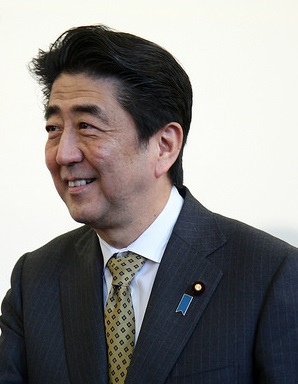Shinzo Abe’s Gone and Done It

For the economy Japanese prime minister Abe has arrows, for foreign policy he wants missiles and for the constitution, well, he has just driven a tank over it.
The world changed on July 1. That sentence is not a resort to a clapped-out cliché. When the Tokyo cabinet “reinterpreted”, in fact overrode, a key clause in its constitution meant to ensure the country’s post-war pacifist approach, it ushered in an era of uncertainty. Since 1945 it has been taken as certain that Japanese troops would never be sent in to combat zones should conflict occur in the Far East.
The reinterpretation of the war-renouncing Article 9 by the Tokyo cabinet means that is no longer the case. There was no clamor in Japan for reinterpretation. Quite the opposite. Opinion polls show a clear majority against reinterpretation.Defenders of reinterpretation claim that the security situation is changing and Japan has to adapt to the new circumstances. China is flexing its increasing military muscle and even has an aircraft carrier, the Liaoning, a refitted hulk it bought from Ukraine. Therefore, their argument goes, Japan must take on a greater burden of its defense responsibilities and free itself from the shackles of a constitution that is outdated and imposed on it by the occupying US forces in 1947. China sees it somewhat differently. It views the reinterpretation as the latest sign of a Japan that is becoming more aggressive to China and by ditching Article 9, a Rubicon has been crossed. In 2013, Abe told the United Nations that Japan will “newly bear” the flag of “proactive pacifism”. Decoded, it means confront China.
A month before Abe’s UN speech, Japan launched the Izumo, a 250-meter-long “flat-topped destroyer.’’ Named after a cruiser that was sunk by the US in 1945, the warship is in reality an aircraft carrier by any other name. However, aircraft carriers imply a force projection well beyond Japan’s shores, therefore it must be called a destroyer or a helicopter carrier. China’s aircraft carrier sees it acused of a military build up, while Japan’s goes largely unnoticed. Beijing sees this as double standards. Abe has made it plain that he wants a wholesale revision of the Japanese constitution to be enacted before the Tokyo 2020 Summer Olympics. “By 2020, I think Japan will have completely restored its status and be making great contributions to peace and stability in the region and the world,” he said.
And the one constitutional restraint that up to now prevented Japan from acting aggressively overseas, has been confined to history.
China also sees the US backing Japan and pushing it to take on the role of a regional policeman. The quantly named US pivot to Asia is in reality a major naval build up just off its coast.
When all these are added up, Beijing sees the sum of its fears.
Article 9 of the Japanese constitution is written in a language that is crisp and clear and seems, at first hand, not to require any reinterpretation as the official English translation of the article shows.
“Aspiring sincerely to an international peace based on justice and order, the Japanese people forever renounce war as a sovereign right of the nation and the threat or use of force as means of settling international disputes. (2) To accomplish the aim of the preceding paragraph, land, sea, and air forces, as well as other war potential, will never be maintained. The right of belligerency of the state will not be recognized.’’
Abe claims that this allows Japan to export arms, deploy troops overseas and continue with a military build up.
Policies are often presented in poetry and government is normally conducted in the less idealistic manner of prose but Abe’s skills at reinterpretation require a linguistic flexibility that normally falls under the category of fiction.
“By simply changing the interpretation of the constitution to achieve its policy objectives, the Abe administration is violating the status of the constitution as the nation’s supreme law to which all other laws and government decisions must conform,’’ the Japan Times aid in an editorial on July 2.
“The move,’’ it continued, “will serve as a dangerous precedent for Japan’s democracy that must be based on the rule of law under the constitution. By taking cues from the Tuesday decision, future administrations may try to render clauses in the constitution meaningless by merely reinterpreting the clauses to fit their agenda through cabinet decisions. Abe insisted Tuesday that the cabinet decision does not harm the normative nature of the Constitution. This is a lie.’’
These are strong words that would defy even Abe’s ability to reinterpret.
Tension between Tokyo and Beijing should never have been allowed to get this far but of even greater concern is that having arrived at this situation predictions of an escalation do not seem far-fetched especially as channels of effective communication seem to have dried up. Conflict is not imminent, or probable but more possible that any time since 1945.
A century ago the lamps were being dimmed in Europe. If politicians look out their office windows tonight, as British Foreign Secretary Sir Edward Grey did in 1914, they will see the lamps are still blazing in Asia but since July 1 their continued burning can no longer be viewed as guaranteed.